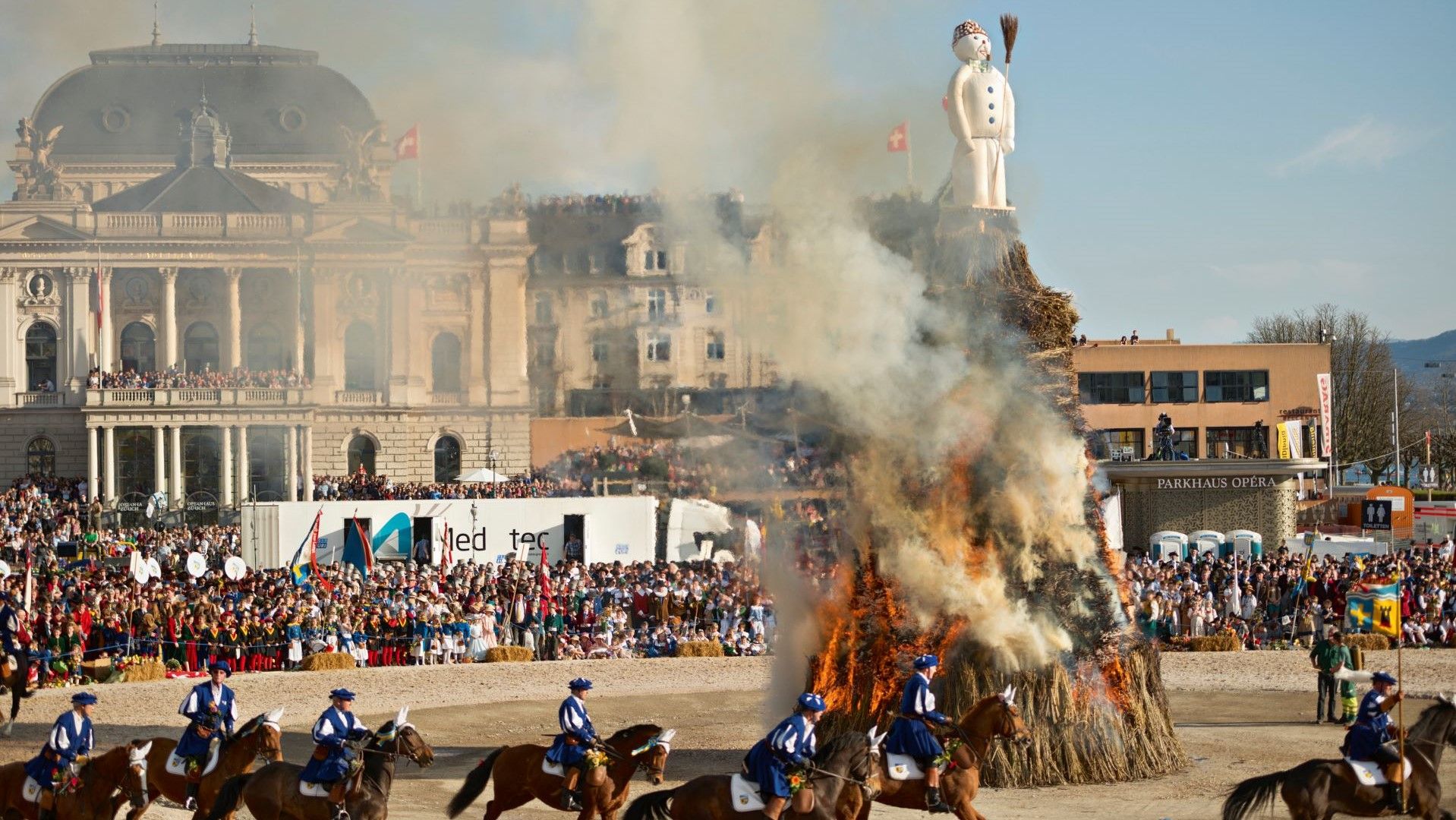Sechseläuten: Zurich’s spring festival
For the last 500 years, the city of Zurich has staged Sechseläuten, a huge festival celebrating the end of winter and the arrival of spring. Spectators flock to central Zurich to take in the parades, period costumes and marching bands that fill the city’s streets. The festivities culminate with the burning of the Böögg, which is said to predict how fine the coming summer will be.


